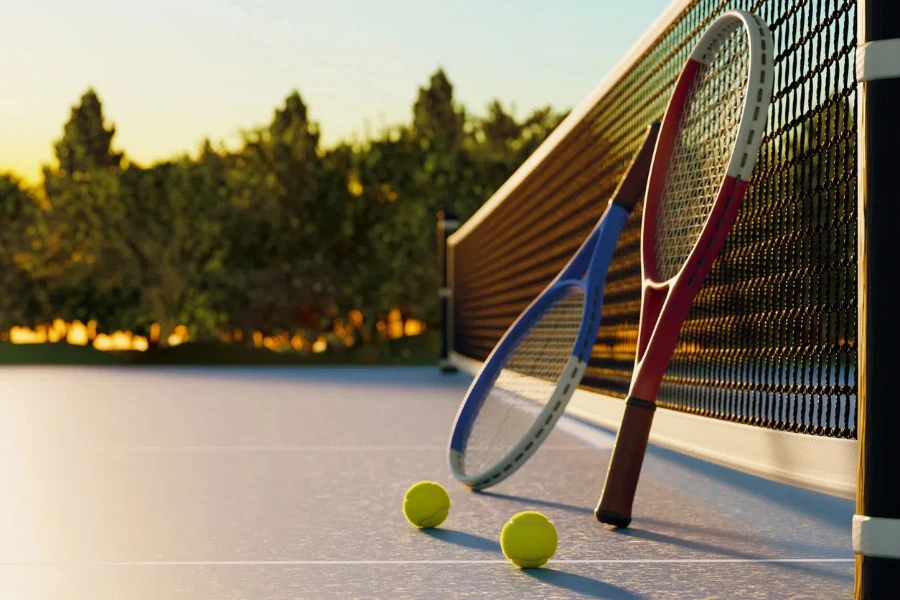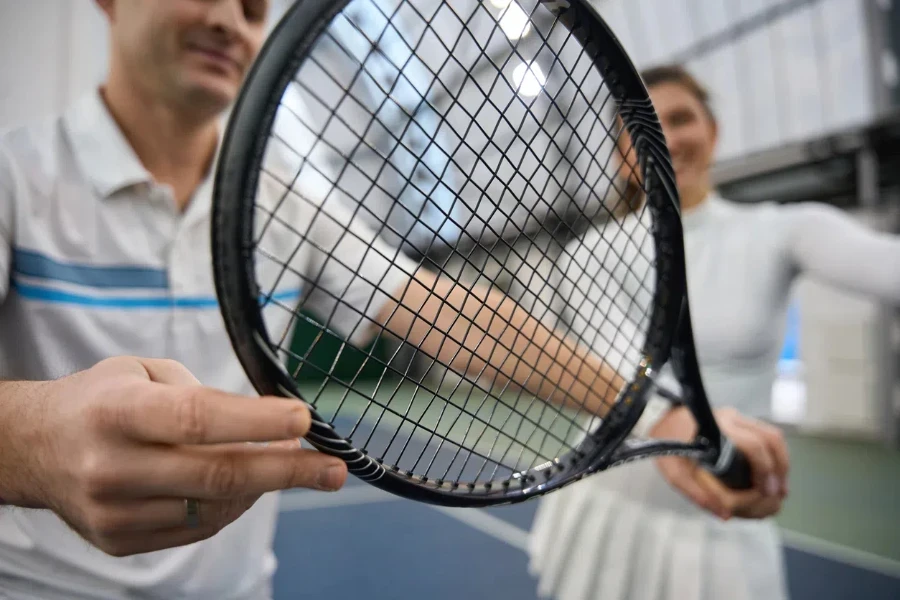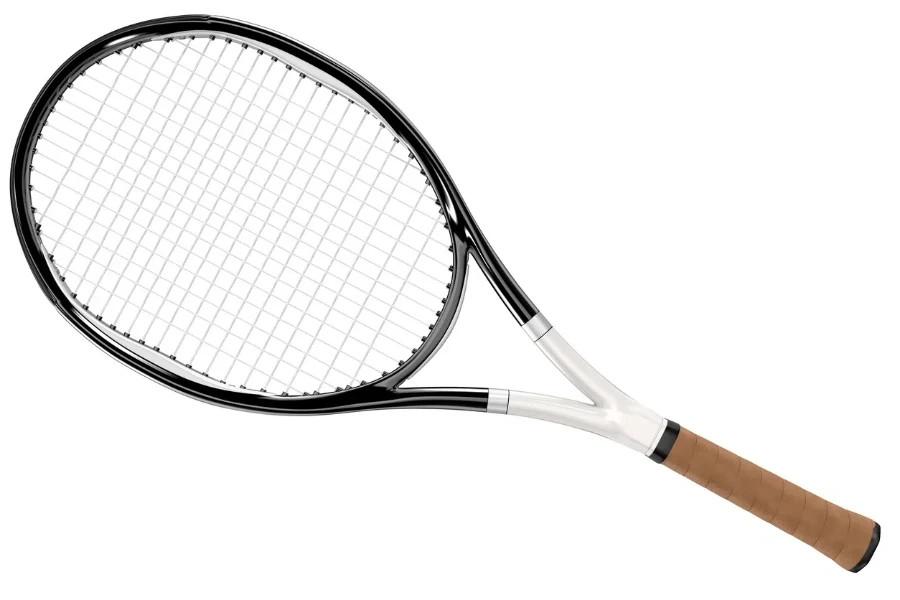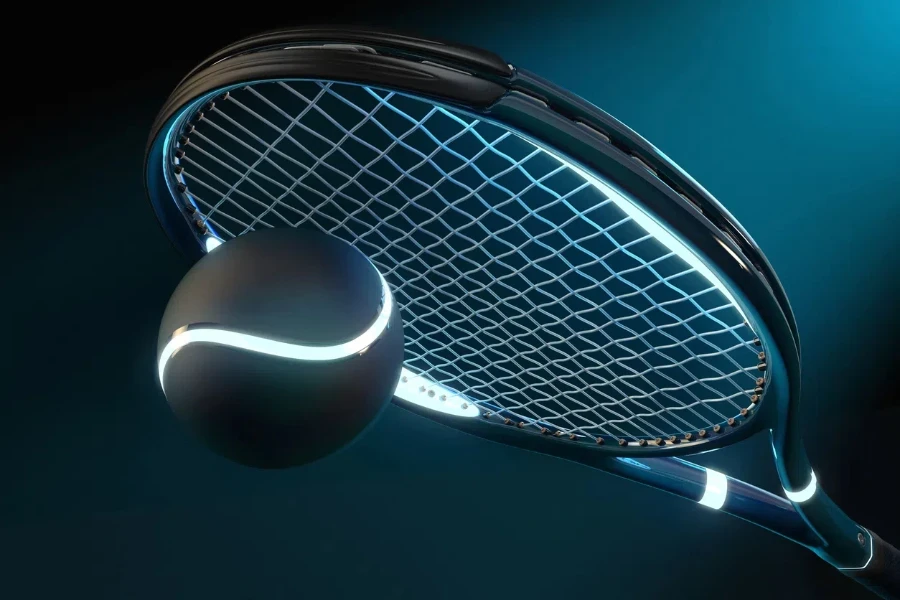The tennis racquet market is experiencing significant growth, driven by technological advancements, increasing participation in tennis, and a rising demand for high-quality equipment. This article delves into the global demand for tennis racquets, identifies key players in the market, and explores emerging markets and growth opportunities.
Table of Contents:
– Market Overview
– Innovative Materials and Textures
– Cutting-Edge Design and Customization
– Technological Advancements in Tennis Racquets
– Durability and Quality Assurance
– Conclusion
Market Overview

Global Demand for Tennis Racquets
The global demand for tennis racquets is on the rise, fueled by an increasing number of recreational and professional players. According to Statista, the worldwide revenue in the racket sports equipment market, which includes tennis racquets, is projected to reach $4.39 billion in 2024. This market is expected to grow at a compound annual growth rate (CAGR) of 8.69% from 2024 to 2029, resulting in a projected market volume of $6.66 billion by 2029. The number of users in the racket sports equipment market is expected to reach 199.5 million by 2029, with a user penetration rate of 2.7%.
Key Players in the Tennis Racquet Market
Several key players dominate the tennis racquet market, each known for their innovative products and strong brand reputation. Wilson Sporting Goods Co., Yonex Co., Ltd., and HEAD N.V. are among the leading companies in this sector. Wilson Sporting Goods Co. is renowned for its high-performance racquets used by top professional players. Yonex Co., Ltd. is a major player in the market, known for its advanced technology and high-quality materials. HEAD N.V. is another significant player, offering a wide range of racquets that cater to different playing styles and skill levels.
Emerging Markets and Growth Opportunities
Emerging markets present significant growth opportunities for the tennis racquet industry. China, in particular, is expected to generate the highest revenue in the racket sports equipment market, with a projected market volume of $2.717 billion in 2024. The increasing popularity of tennis in China, coupled with rising disposable incomes and a growing middle class, is driving the demand for high-quality tennis racquets. Additionally, the market in the United States is also experiencing growth, with revenue projected to reach $361.40 million in 2024 and an annual growth rate of 9.00% from 2024 to 2029.
Innovative Materials and Textures

The Rise of Graphene and Carbon Fiber
In recent years, the tennis racquet industry has seen a significant shift towards the use of advanced materials such as graphene and carbon fiber. These materials are not only lightweight but also incredibly strong, providing players with enhanced performance and durability. Graphene, a single layer of carbon atoms arranged in a two-dimensional honeycomb lattice, has been hailed as a revolutionary material in various industries, including sports equipment. Its incorporation into tennis racquets has allowed manufacturers to create frames that are both lighter and stronger, offering players better control and power.
Carbon fiber, another high-performance material, has been a staple in the sports industry for years. Its use in tennis racquets has been particularly beneficial due to its high stiffness-to-weight ratio. This means that racquets made from carbon fiber can be incredibly stiff without adding extra weight, allowing players to generate more power with less effort. According to a report by Euromonitor International, the use of these advanced materials has been a key factor in the ongoing transformation of sports equipment, including tennis racquets.
Enhanced Grip and Comfort with New Textures
In addition to innovative materials, the texture of tennis racquets has also seen significant advancements. Manufacturers are now focusing on creating grips that offer enhanced comfort and control. This is particularly important for players who spend long hours on the court and need a racquet that can provide a secure and comfortable grip.
One of the latest trends in this area is the use of textured grips that improve traction and reduce slippage. These grips are often made from materials that can absorb sweat and provide a tacky feel, ensuring that the racquet stays firmly in the player’s hand even during intense matches. The demand for such ergonomic and comfortable grips has been on the rise, driven by the increasing popularity of tennis as a recreational and competitive sport.
Cutting-Edge Design and Customization

Ergonomic Designs for Improved Performance
The design of tennis racquets has evolved significantly over the years, with a growing emphasis on ergonomics. Ergonomic designs aim to reduce the risk of injury and improve overall performance by ensuring that the racquet fits comfortably in the player’s hand and allows for natural movement. This includes features such as contoured handles, balanced weight distribution, and optimized string patterns.
According to a report by Euromonitor International, the focus on ergonomic design is part of a broader trend towards personalized sports equipment. Players are increasingly looking for racquets that can be customized to their specific needs and preferences, whether it’s the weight, balance, or string tension. This trend is particularly evident in the professional tennis circuit, where players often work closely with manufacturers to create racquets that are tailored to their playing style.
Customization Options for Personalized Play
Customization has become a key selling point for tennis racquet manufacturers. Players now have the option to customize various aspects of their racquet, from the weight and balance to the grip size and string tension. This level of personalization allows players to fine-tune their equipment to match their playing style and preferences, resulting in improved performance on the court.
The demand for customized sports equipment has been growing steadily, driven by the increasing popularity of tennis and other sports. This trend is also supported by advancements in technology, which have made it easier for manufacturers to offer a wide range of customization options. For example, some companies now use 3D printing technology to create custom grips and other components, allowing for a higher degree of precision and personalization.
Technological Advancements in Tennis Racquets

Smart Racquets with Built-in Sensors
One of the most exciting developments in the tennis racquet industry is the advent of smart racquets equipped with built-in sensors. These sensors can track various aspects of a player’s performance, such as the speed and spin of the ball, the force of the impact, and the accuracy of their shots. This data can then be analyzed to provide valuable insights into the player’s strengths and weaknesses, helping them to improve their game.
The use of smart technology in sports equipment is part of a broader trend towards data-driven performance optimization. Players and coaches are increasingly relying on data to make informed decisions about training and strategy, and smart racquets are a key tool in this process. Some of the leading brands in the industry, such as Babolat and Wilson, have already introduced smart racquets that are gaining popularity among both amateur and professional players.
Vibration Dampening Technology for Better Control
Another significant technological advancement in tennis racquets is the development of vibration dampening technology. This technology aims to reduce the vibrations that occur when the ball makes contact with the racquet, which can cause discomfort and affect the player’s control. By minimizing these vibrations, players can achieve better accuracy and consistency in their shots.
Vibration dampening technology has become a standard feature in high-end tennis racquets. Manufacturers use various materials and design techniques to achieve this effect, such as incorporating dampening inserts into the frame or using special string patterns. This technology not only enhances performance but also reduces the risk of injury, making it a valuable addition to modern tennis racquets.
Durability and Quality Assurance

Long-lasting Materials for Extended Use
Durability is a crucial factor for tennis players when choosing a racquet. The use of high-quality materials such as graphene and carbon fiber has significantly improved the durability of modern tennis racquets. These materials are not only strong and lightweight but also resistant to wear and tear, ensuring that the racquet can withstand the rigors of regular use.
The focus on durability is part of a broader trend towards sustainable and long-lasting sports equipment. Players are increasingly looking for products that offer good value for money and can last for several seasons. This has led manufacturers to invest in research and development to create racquets that are both durable and high-performing.
Quality Control Standards in Manufacturing
Quality assurance is another critical aspect of the tennis racquet industry. Manufacturers adhere to strict quality control standards to ensure that each racquet meets the required specifications and performs consistently. This includes rigorous testing of materials, design, and construction processes to identify and address any potential issues.
The emphasis on quality control is driven by the need to maintain customer trust and satisfaction. Players rely on their equipment to perform at their best, and any defects or inconsistencies can have a significant impact on their game. By implementing robust quality control measures, manufacturers can ensure that their racquets meet the highest standards of performance and reliability.
Conclusion
The tennis racquet industry is undergoing a remarkable transformation, driven by advancements in materials, design, technology, and quality assurance. From the use of graphene and carbon fiber to the development of smart racquets and vibration dampening technology, these innovations are enhancing the performance and durability of tennis racquets. As the demand for personalized and high-quality sports equipment continues to grow, manufacturers are likely to invest further in research and development to meet the evolving needs of players.




